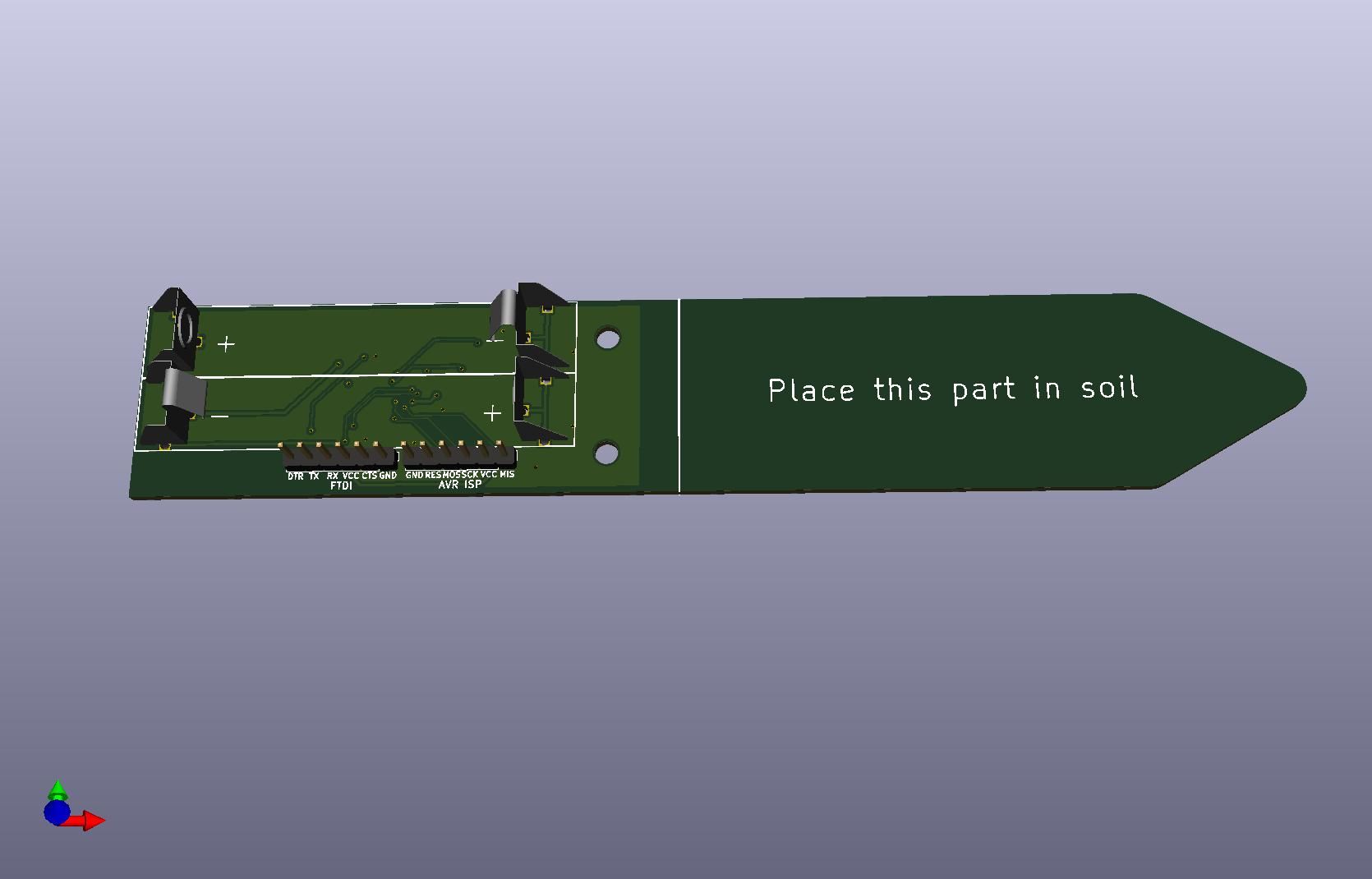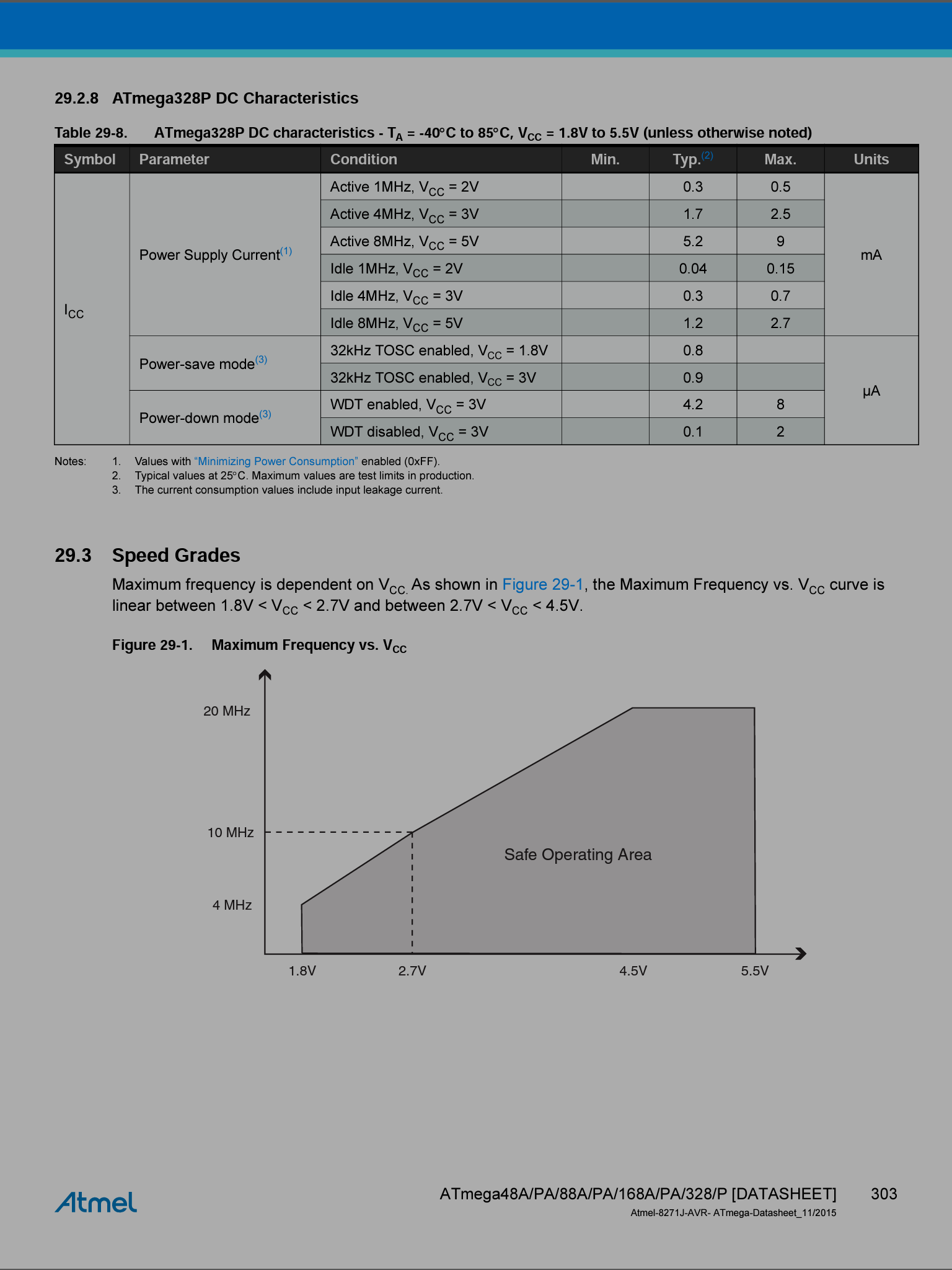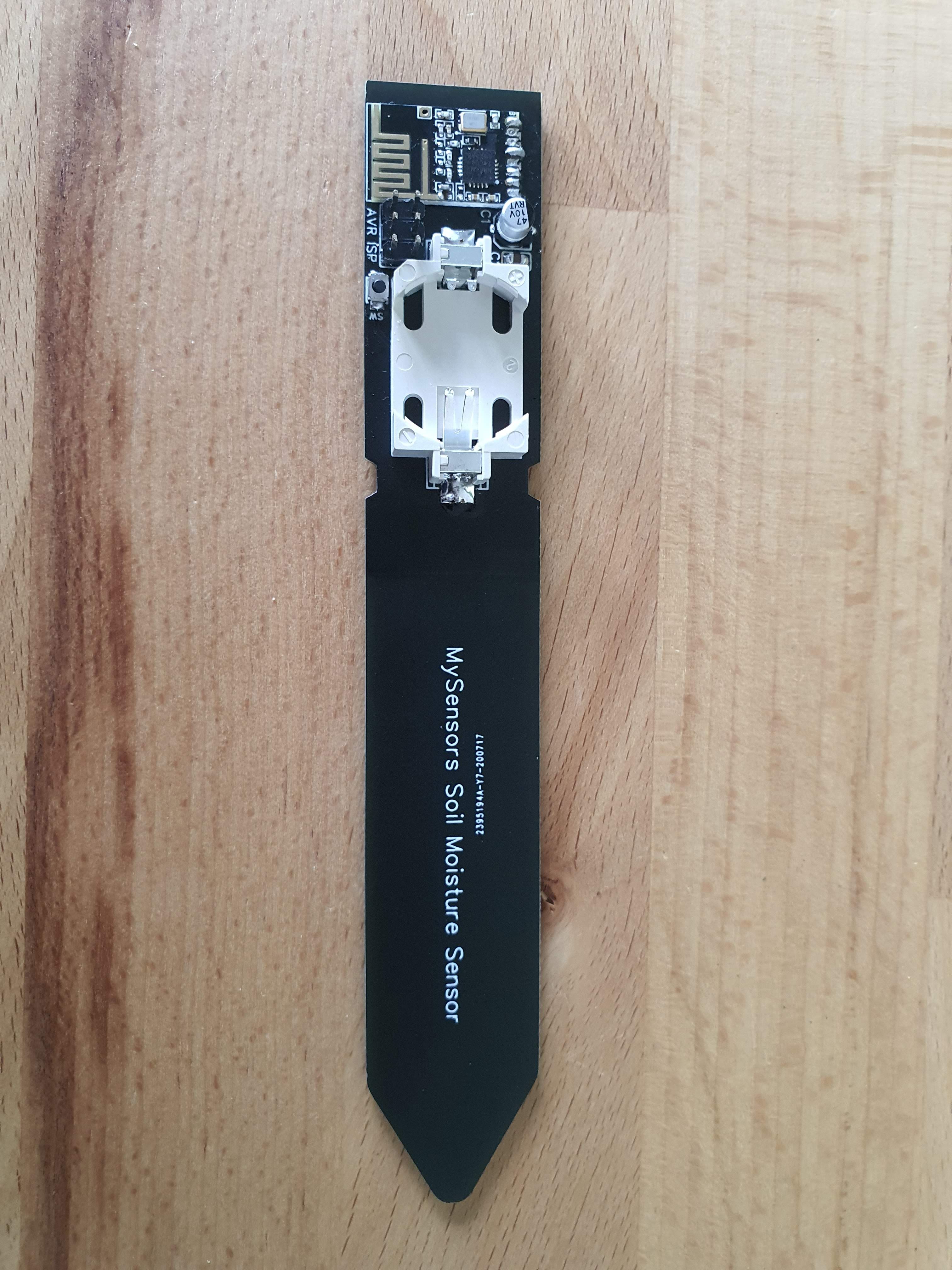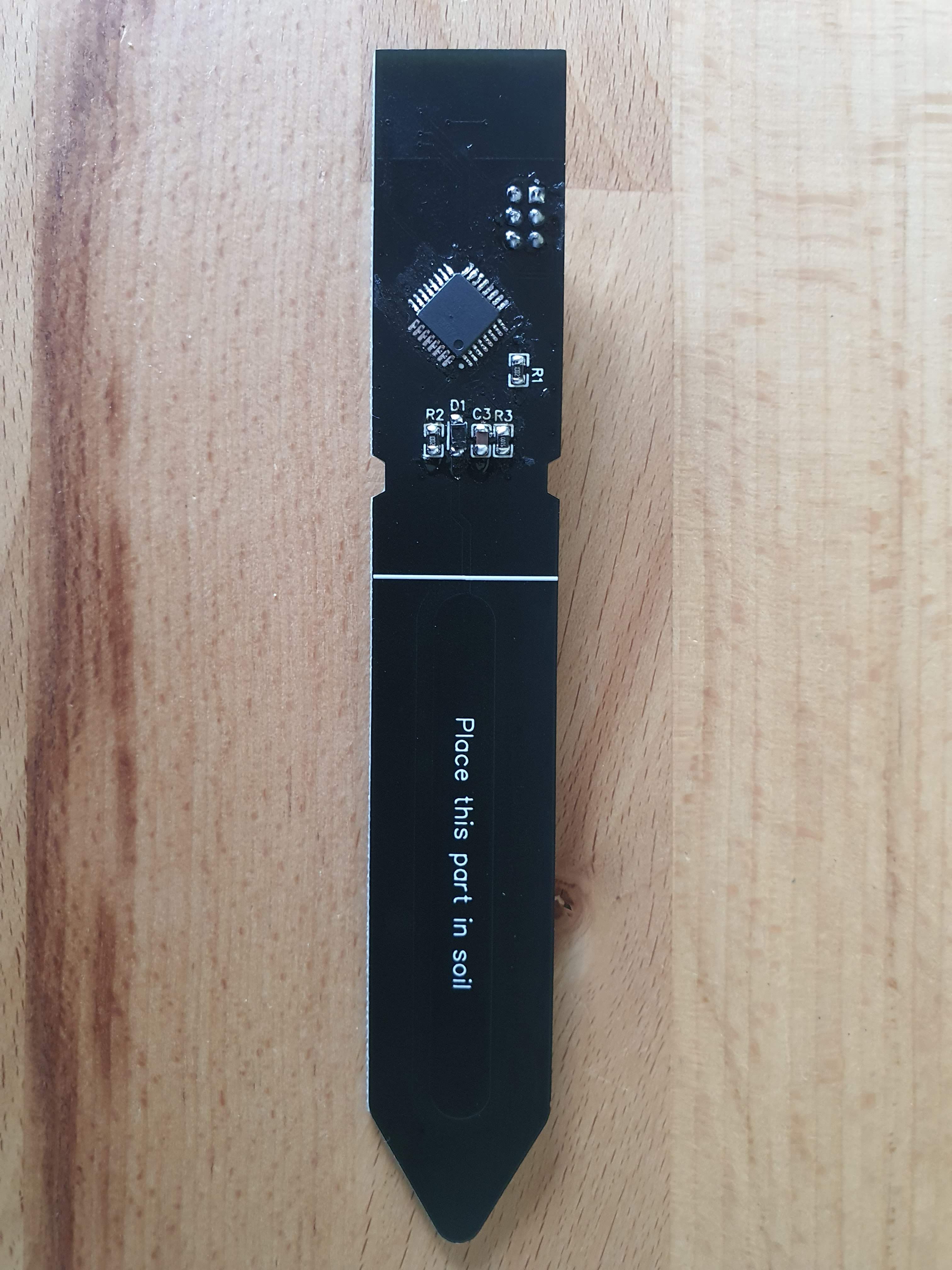ATMEGA328P standalone soil moisture sensor
-
I have a strong feeling that I got the wrong diode for the rectification of the triangular wave that comes out after the capacitive sensor (RC circuit). I got this one:
https://lcsc.com/product-detail/Schottky-Barrier-Diodes-SBD_Guangdong-Hottech-SS14L_C190475.html
In the datasheet it says that this diode has a Typical Junction Capacitance of between 90 and 110 pF which seems pretty high compared to the capacitance of the sensor. Do I need a diode with a lower capacitance?
Can someone give me a hint if I am on the right track?
Thank you :)Edit: Okey I switched the smd diode with an all purpose tht diode that I had lying around and now the voltage swing is already at 1.1V so it definitely is the diode. Any recommendations on diode selection for high frequency (1-4MHz) applications?
-
Hi everyone,
I have rebuild the sensor and this is the current status:
- Changed out the coincell for two AAA batteries due to higher capacity and better availability. This increased the sensor size in both height and width but this does not bother me.
- Added the possibility to attach an ATSHA204A in a SOT-23-3 package for message signing.
- Added an FTDI connection besides the AVR-ISP
- Changed from indentation to mounting holes. This makes it easier to design 3D printed cases for it.
Any nice features that I am missing here or that some of you would like to see on this? I am open for suggestions :)
PS: Is there any way to scale the uploaded images?


-
Hi there,
I am currently thinking about a power supply solution for the sensor. The possible options with their advantages/disadvantages are:
- Single AAA Battery Cell + dc-dc boost converter
+ compact formfactor
- not that much capacity
- additional costs because of boost converter hardware - Double AAA Battery
+ relatively large capacity and thus longer lifetime
+ no need of a booster which could introduce noise to the radio
- bulky (as you can see on the photos of my last post)
What bothers me is that without a booster I can only use two AAA batteries until they reach 2.7V in total, as I need at least 2.7V if I want to use the 8 MHz internal clock of the atmega.
Does it make sense to combine two AAA batteries with a boost converter to 3.3V? This way one could use the batteries until they reach ~2V in total.
I am interested to hear your thoughts on that. - Single AAA Battery Cell + dc-dc boost converter
-
Hi there,
I am currently thinking about a power supply solution for the sensor. The possible options with their advantages/disadvantages are:
- Single AAA Battery Cell + dc-dc boost converter
+ compact formfactor
- not that much capacity
- additional costs because of boost converter hardware - Double AAA Battery
+ relatively large capacity and thus longer lifetime
+ no need of a booster which could introduce noise to the radio
- bulky (as you can see on the photos of my last post)
What bothers me is that without a booster I can only use two AAA batteries until they reach 2.7V in total, as I need at least 2.7V if I want to use the 8 MHz internal clock of the atmega.
Does it make sense to combine two AAA batteries with a boost converter to 3.3V? This way one could use the batteries until they reach ~2V in total.
I am interested to hear your thoughts on that. - Single AAA Battery Cell + dc-dc boost converter
-
@mfalkvidd said in ATMEGA328P standalone soil moisture sensor:
@Ron You can use 8MHz safely down to 2.34V according to the graph in the datasheet.
Are you sure with that? I found this information in the datasheet to the atmega328p-au, where it states that the safe operating range ends at 2.7V:

Maybe I should consider using an external oscillator instead of the internal one? Do you know something about the power consumption with an external crystal compared to the internal oscillator?
@mfalkvidd said in ATMEGA328P standalone soil moisture sensor:
For size, CR123a might be an option. They are lithium 3V, so one would be sufficient.
These ones look definitely interesting, I will have a look at them, thank you :)
-
@mfalkvidd said in ATMEGA328P standalone soil moisture sensor:
@Ron You can use 8MHz safely down to 2.34V according to the graph in the datasheet.
Are you sure with that? I found this information in the datasheet to the atmega328p-au, where it states that the safe operating range ends at 2.7V:

Maybe I should consider using an external oscillator instead of the internal one? Do you know something about the power consumption with an external crystal compared to the internal oscillator?
@mfalkvidd said in ATMEGA328P standalone soil moisture sensor:
For size, CR123a might be an option. They are lithium 3V, so one would be sufficient.
These ones look definitely interesting, I will have a look at them, thank you :)
-
@Ron interesting. This is what the graph looks like in my copy:

I guess the difference is P vs P-AU, and my datasheet might be an older revision.
@mfalkvidd you are right, I might somehow have found an older datasheet somewhere (my one was from 2015). In the current datasheet from the microchip website the same graph is present which indicates 2.4V minimum for 8 MHz. So I probably will deactivate 2.7V BOD. :)
-
@Ron interesting. This is what the graph looks like in my copy:

I guess the difference is P vs P-AU, and my datasheet might be an older revision.
@mfalkvidd said in ATMEGA328P standalone soil moisture sensor:
difference is P vs P-AU
You found the automotive grade datasheet, which contains a different curve
-
@mfalkvidd said in ATMEGA328P standalone soil moisture sensor:
difference is P vs P-AU
You found the automotive grade datasheet, which contains a different curve



